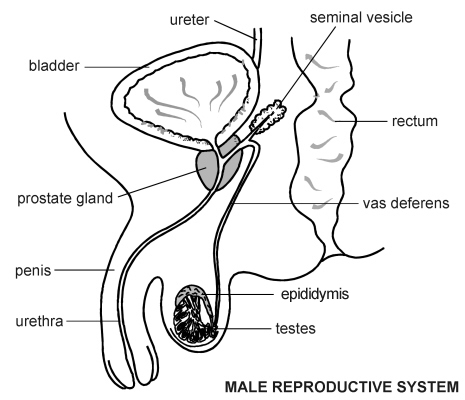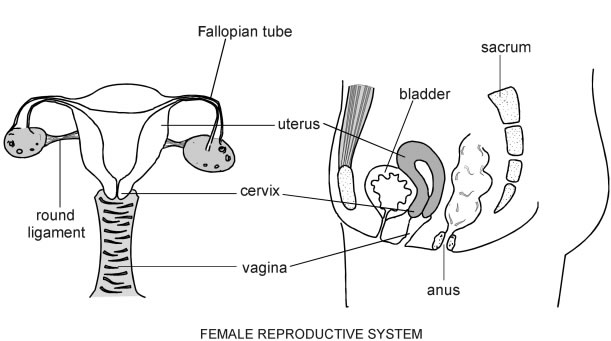Question
Well, it is that time—yes, time for that talk. For this activity, you will develop a PowerPoint Presentation about human reproduction. You are to pretend that the presentation is what you will use to give your son or daughter “the talk” about human reproduction. Make sure you use correct terminology. If you have never created a PowerPoint Presentation, make sure you view the CSU Success Center videos suggested in the unit learning activity.
Your presentation must include the following:
? overall purpose of the reproductive systems;
? information about the male and female systems including:
o at least two visual aids illustrating the two systems, and
o structure and function of the major organs of both male and females systems;
? methods of practicing “safe sex” and preventing pregnancy; and
? STDs.
Sample paper
Human Reproduction PowerPoint Presentation
Overall Purpose of the Reproductive Systems
- Perpetuation of species.
- Production of hormones.
- Stores gametes, which are specialized sex cells.
The primary role of the reproductive system is to ensure perpetuation of the species. In humans, the reproductive system plays a crucial role in reproduction. The male reproductive system produces sperms through a process known as spermatogenesis. The male reproductive system also delivers the sperms to the female reproductive system where they meet and fertilize an egg released from the ovary. Apart from procreation, the reproductive system produces hormones that help in achieving sexual maturity and development of secondary sexual characteristics in both males and females. Some of the hormones produced by the reproductive system include testosterone hormone and estrogen hormone. The reproductive system stores gametes, which are specialized sex cells containing a single set of unpaired chromosomes.
The Male Reproductive System
- The testes are enclosed in the scrotum.
- The scrotum hangs outside the body for optimal temperatures required in sperm production.
- The testes has glands that produce semen.
- Urethra is a narrow tube along the penis.
- The penis introduces sperms into the vagina.
The male reproductive system plays two crucial roles: sperm production and introducing the sperms to the female reproductive system (Sherwood, 2012). Testes are the organs involved in sperm production. The testes are enclosed in the scrotum that hangs outside the body for optimal temperatures required in sperm production (35 degrees Celsius). The testes are made up of coiled tube where sperm production occurs. Several glands produce semen, which acts as the transport vehicle as well as providing nutrients for sperms. These glands include prostate gland, seminal vesicles, and bulbourethral glands. The penis deposits semen into the female reproductive system during copulation. The glans of the penis becomes stimulated during sex, which leads to ejaculation. Sperm travels through various tubes such as epididymis, vas deferens, and the ejaculatory duct (Sherwood, 2012). It finally reaches the urethra that runs along the length of the penis.
Visual Aid of Male Reproductive System

The Female Reproductive System
- Has two ovaries.
- Fallopian tubes that are in close association with ovaries.
- The uterus is a thick-walled hollow sac.
- The cervix is the opening to the uterus.
- The vagina leads to the cervix and is the outermost structure.
The female reproductive system is mostly internal. The female reproductive system has six essential functions. These include ova production, sperm reception and conception, maintaining pregnancy, giving birth, and nourishing the young one (Sherwood, 2012). The ovaries are the organs that release an ovum. The fallopian tubes lie close to the ovaries. Once the ovum is released, it travels through the fallopian tube to the fertilization site. If the egg meets the sperm while in the fallopian tube, fertilization occurs. The fertilized ovum continues travelling until it reaches the uterus. The uterus is a hollow body where a fertilized egg attaches itself to the walls and continues to develop for a period of 9 months. The uterus maintains the fertilized egg until birth. The uterus is responsible for expelling the fetus after 9 months. At the lower part of the uterus is the cervix. The cervix is a narrow opening that permits the sperms to move up to the fallopian tubes for fertilization to occur. The cervix acts as the passageway for the baby during birth.
Visual Aid of the Female Reproductive System

Structure and Function of the Major Organs: Male Reproductive System
- The testes are the organs where sperms are produced.
- Testes also produce testosterone hormone.
- Seminal vesicle, prostate gland, and bulbourethral glands produce seminal fluid.
- The urethra acts as the passageway for sperms during copulation.
- The penis introduces sperms into the vagina.
The testes are an oval-like structure that is suspended outside the body. The testes are the organs where sperms are produced. The testes also produce the testosterone hormone. The epididymis is a long curved tube located at the margin of the testes. It transports sperms from the testes. Within the testes, there are seminal vesicles, prostate gland, and bulbourethral gland. The seminal vesicle contains the liquid that forms semen when mixed with sperms. The prostate gland secretes the prostate fluid, which also forms part of semen. The prostate gland is also important during the ejaculation process. The bulbourethral gland also secretes fluid that adds to semen. Another major organ is the vas deferens. This is a long narrow tube joins the epididymis to the urethra. The vas deferens introduces sperms into the urethra during ejaculation. The penis becomes hard while erect and introduces the sperms into the vagina (Sherwood, 2012).
Structure and Function of the Major Organs: Female Reproductive System
- The vagina receives sperms and acts as the birth canal.
- The cervix leads the sperms into the uterus and also allows flow of menstrual blood out of the uterus.
- The uterus maintains the fetus and expels it during birth.
- The fallopian tubes provide the avenue for fertilization.
- The ovaries produce eggs.
The vagina is one of the major organs in the female reproductive system. The vagina receives sperms during copulation. The vagina is also known as birth canal since it serves as the exit point when the baby leaves the womb during birth (Sherwood, 2012). The cervix is a narrow opening at the bottom of the uterus. The cervix allows menstrual blood to flow out of the uterus and into the vagina. The cervix also directs the sperms towards the uterus after intercourse. The uterus is hollow and contains thick walls. The uterus maintains the fetus from the early stages to birth. During birth, the uterus contracts thus expelling the fetus. The fallopian tubes are narrow tubes where the ovum travels through to meet the sperm. Fertilization occurs in the fallopian tubes. The last major organ is the ovary. The ovary is located along the lateral walls of the uterus. The ovaries serve as the sites where oocytes or eggs develop (Sherwood, 2012).
“Safe Sex”
- This is sex that does not involve exchanging sexual fluids.
- Consistent and correct use of condoms enhance “safe sex”.
- Married couples should be faithful to one another.
- Regular STI screening can enhance “safe sex”.
“Safe sex” refers to sexual intercourse that does not involve exchanging semen or vaginal fluids between couples. Individuals are advised to use condoms, which significantly reduce the risk of infections and unwanted pregnancy. Condoms should be used correctly as well as consistently. This improves their effectiveness. Inconsistent and incorrect use of condoms may lead to transmission of STIs. Among married couples, they can practice “safe sex” by being faithful to one partner and undergoing regular STI screening.
Preventing Pregnancy
- Natural methods
- Use of shields such as condoms and diaphragm.
- Use of contraceptive pills.
- Intrauterine device.
- Implants.
There are various methods available for preventing pregnancy. Common methods include natural methods (abstinence and rhythm method), use of condoms, diaphragm & spermicidal jelly, use of contraceptive pills, intrauterine device (IUD), and implants (Russell, Herz, & McMillan, 2015). Abstinence refers to restraining oneself from sexual intercourse. The rhythm method involves analyzing a woman’s fertility cycle, and thus having sex when a woman is unlikely to conceive. There are male and female condoms that act as a physical barrier preventing sexually transmitted infections and the risk of pregnancy. Diaphragm refers to a cup-shaped barrier inserted in the cervix. This prevents sperms from swimming up to the fallopian tubes. Spermicidal jelly is a chemical that is placed at the center of the diaphragm to kill sperms. Contraceptive pills are of different types. Majority of them contain the hormones estrogen and progestin (Russell, Herz, & McMillan, 2015). By changing the hormonal balance in the body, they are able to prevent pregnancy. The IUD is a metal device inserted into the uterus to prevent implantation. The implant contains hormones and is inserted under the skin.
STDs
- These are diseases transmitted via sex.
- They be transmitted via oral, vaginal and anal sex.
- Common STDs include gonorrhea, herpes, HPV, syphilis, and others.
- STDs may be symptomatic or asymptomatic.
STDs refers to diseases that are transmitted through sex. This may be oral sex, vaginal sex, or anal sex (Holmes, 2008). STDs are normally transmitted during unprotected sex from an infected person to a healthy person. STDs include viral diseases such as HIV & AIDS. Common STDs include gonorrhea, herpes, human papillomavirus (HPV), syphilis, scabies (may be transmitted through skin contact and through sex), pubic lice, pelvic inflammatory disease (PID), and among others. Some STDs do not produce obvious signs or symptoms, meaning that individuals may unknowingly pass them to others. Such STDs include syphilis, HPV, and HIV & AIDS.
References
Holmes, K. K. (2008). Sexually transmitted diseases. New York: McGraw-Hill Medical.
Russell, P. J., Herz, P. E., & McMillan, B. (2015). Biology: The dynamic science. Boston, MA: Cengage Learning.
Sherwood, L. (2012). Fundamentals of human physiology. Belmont, CA: Brooks/Cole Cengage Learning.